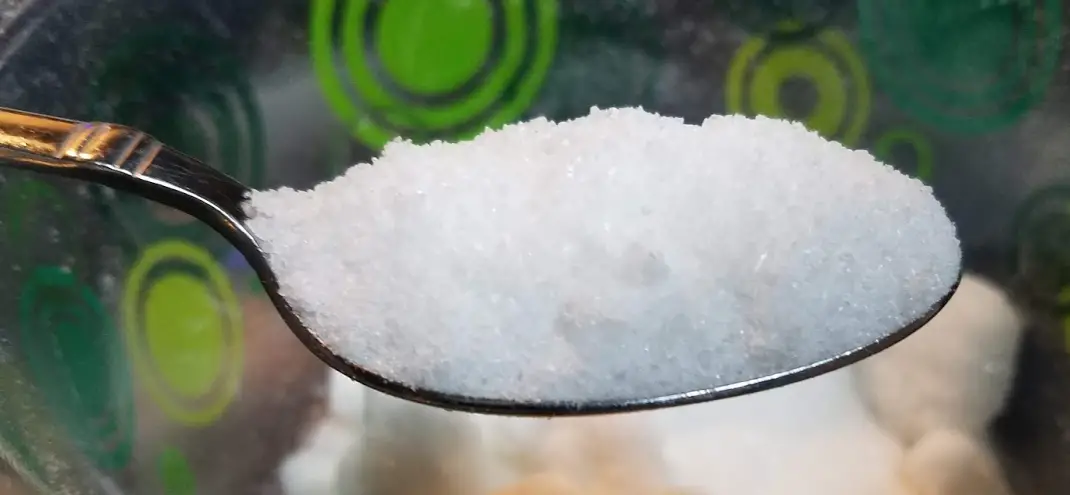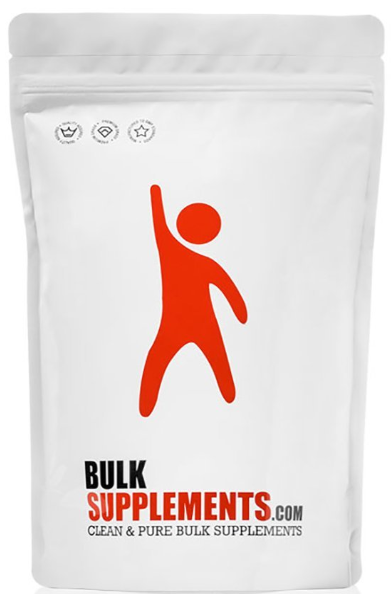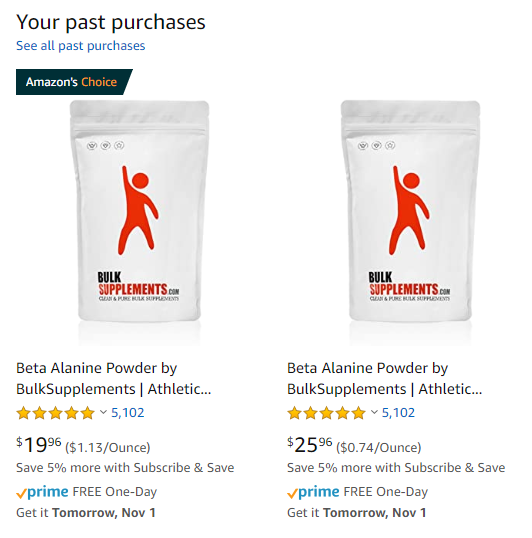The supplement industry is notorious for its many hyped-up products with little anecdotal or scientific backing.
If you opened up an online supplements store or go to your local GNC, you’d be met with an array of fat-burners, protein supplements, vitamins, minerals, gainers, performance boosters, amino acids, and so, so much more.
Sadly, most of the products on these shelves don’t do anything for us.
Still, there are a few supplements that work and have an extensive body of research at their backs. One of these products is beta-alanine.
Today, we’ll cover everything you need to know about this amino acid, how it works, what it does for us, what some potential side effects may occur, and how to take it for the best possible outcome.
Let’s go.

What is Beta-Alanine?
Before we can understand how (and why) beta-alanine works, we first need to look at the molecule carnosine, which is primarily found in muscle and brain tissue. Carnosine serves as a buffer for hydrogen ions which themselves are by-products of muscle contraction from the breakdown of ATP (Adenosine triphosphate).
A quick side note: ATP molecules are the main energy currency for the body.
Now, here’s the interesting bit:
As hydrogen ions build up within the muscle, the pH of it falls, and it becomes more acidic. It’s precisely the acidity which causes the familiar burning sensation in your muscles during a high-repetition set in the gym or a long run in the park.
As the acidity rises, you feel a progressively more intense burning sensation, fatigue increases, and you eventually reach a point of muscular failure – the muscles at work can no longer produce enough force for the given activity.
Now, let’s circle back to beta-alanine:
Beta-alanine increases levels of the molecule carnosine, which, as we covered, serve to buffer hydrogen ions in our muscles (1). This, in turn, slows down the fall of pH and rise in acidity, delays the burning sensation and fatigue, and allows us to go the extra mile before exhausting our muscles.

Beta-Alanine for Endurance
Beta-alanine is among the best-researched supplements out there, and studies have repeatedly shown that it reliably improves endurance and performance, particularly in the 60-240-second range (2, 3, 4, 5). In other words, physical activities that take between 1 and 4 minutes appear to benefit greatly.
This was well-documented in one meta-analysis from 2012 that looked at 15 studies and a total of 360 participants (6). Researchers concluded that, for the 60-240 second-long bouts of exercise, beta-alanine showed a lot of promise:
For the 9 measures lasting 60–240 s there was a significant difference between the effect size of the BA and Pla groups
These findings were largely recreated in another, more prominent meta-analysis (40 studies, 1461 total participants) from 2017 (7). In their own words:
β-alanine had a significant overall effect while subgroup analyses revealed a number of modifying factors. These data allow individuals to make informed decisions as to the likelihood of an ergogenic effect with β-alanine supplementation based on their chosen exercise modality.
These findings are very much in line with what we know about the effects of beta-alanine. Since the supplement effectively delays the burning sensation (and the accompanying muscular fatigue), it makes sense that activities that lead to significant muscle burn (such as those in the 1-4 minute range) would benefit the most.
But does that mean beta-alanine doesn’t have other potential benefits?

Beta-Alanine for Muscle Growth
First, we’ve got a paper from 2011 (8). In it, researchers sought to determine what the effects of beta-alanine supplementation on body composition are in wrestlers and football players. They had 22 college wrestlers with an average age of 20 and 15 football players with an average age of 18.
All of the subjects were split into two groups – one took four grams of beta-alanine daily, and the other group was given a placebo. In the eight weeks of the study, the beta-alanine group saw improvements in several athletic measures, including timed 300-yard shuttle.
Both groups of wrestlers lost weight during the study (as was the goal), but the beta-alanine group saw an increase in lean mass by 1.1 lbs where the placebo group lost nearly one pound of lean mass. The increase in lean mass could indicate muscle growth thanks to their improved athletic measures.
Both groups of football players gained weight, but the beta-alanine group gained, on average, about 2.1 lbs of lean body mass and the placebo group saw an increase of nearly a pound less.
It appears that beta-alanine supplementation not only increased several performance measures in these previously trained athletes but also allowed them to gain lean mass.
The next study is from 2009, and in it, researchers sought to determine what the effects of beta-alanine supplementation and HIIT would be (9). Here, subjects were either given 6 grams of beta-alanine per day or a placebo, split into four equal doses for the first three weeks, and two doses of 3 grams each for the second half of the study.
Researchers found significant improvements in the beta-alanine group after six weeks in the face of VO2 peak, total work done, and lean body mass gain. It’s worth pointing out, however, that these subjects did high-intensity interval cycling with 2 minute-long bouts of cycling with a minute of rest in-between.
These two studies build a good case for beta-alanine, but we have to keep in mind that we need more research on the subject before concluding. For one, subjects in both studies did some endurance-based activities (high-intensity cycling, 300-yard shuttle, and flexed arm hang). How results would come out if the subjects did shorter and more intense training (for example, heavy weight training) is still up for debate.
Second, both studies were relatively short-term – six and eight weeks, respectively. These results could change dramatically if we stretched these studies to, say, six months, a year or longer.
Check out this related video from Dorian Wilson on youtube.
Beta-Alanine for Fat Loss
Research so far is mostly in agreement that beta-alanine supplementation reliably improves exercise performance. There are also a few studies that suggest an increase in muscle mass thanks to the amino acid. But can these findings suggest benefits for fat loss?
It’s certainly plausible.
For one, we saw that beta-alanine supplementation could lead to increases in lean body mass during periods of weight loss (8, 9). This alone is a significant indicator that beta-alanine may be a useful supplement for fat loss.
The goal of any sound weight loss plan is to allow us to maintain as much muscle mass as we can while dropping fat – this will enable us to achieve the lean and athletic look we are all looking for. Losing weight for the sake of it often leads to disappointing results.
And gaining lean mass while dropping fat, as seen in these two studies, is an even better outcome.
Second, we have the performance-enhancing benefits of beta-alanine (2, 3, 4, 5, 6, 7, 10). These are primarily thanks to the increase in muscle carnosine, which mostly works by delaying fatigue and the burn. This is important for several reasons:
1) That allows you to do more productive cardio sessions and burn more calories without fatiguing yourself as much.
2) One could argue that beta-alanine can also lead to better weight training sessions (which often suffer during a caloric deficit) overall. Even if there isn’t a significant difference on a set-to-set basis, extra repetitions here and there translate to better results in the gym, more calories burned, and more fat loss.
3) The delayed time to muscular fatigue can also play a role in NEAT – non-exercise activity thermogenesis. In other words, the amino acid may beneficially impact your overall activity level throughout the day. Though this is a bit more speculative and no studies (to the best of my knowledge) have examined this relationship.
All in all, while there aren’t direct studies to suggest that beta-alanine leads to more fat loss, this can certainly be the case. The performance-enhancing benefits alone are a good enough reason to supplement with beta-alanine during caloric restriction.
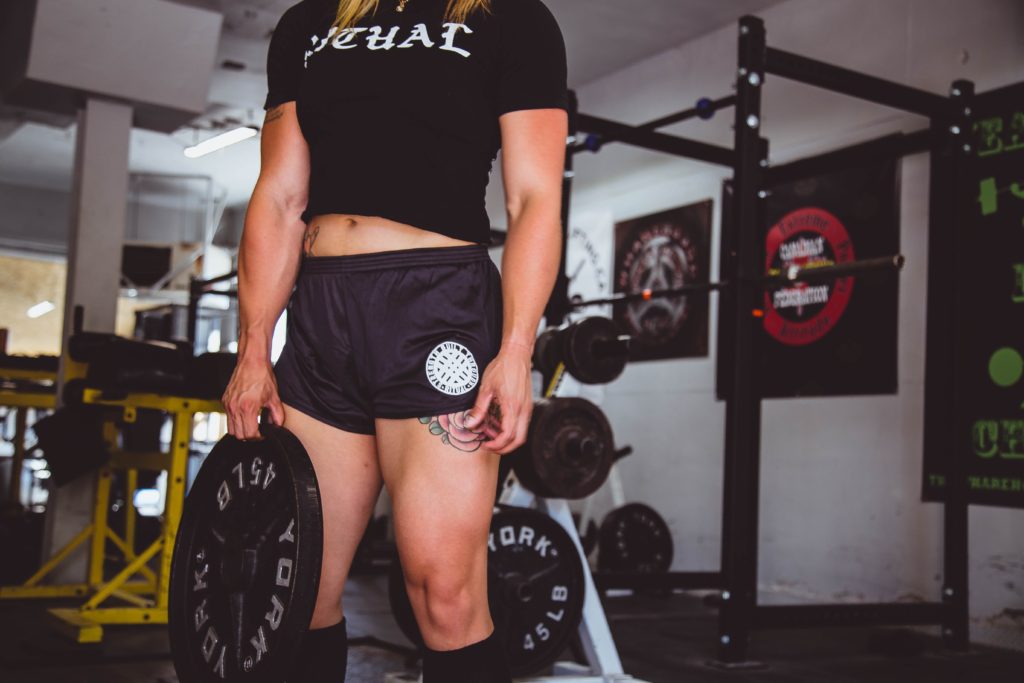
Beta-Alanine for Strength
There have been multiple studies examining the effects of beta-alanine on power and explosiveness – for example, these two done on boxers and female soccer players (11, 12).
And while both of them give us a bit of an insight into beta-alanine’s benefits with regards to explosiveness, decreased time to fatigue, and the ability to do more work, we should take these results with a grain of salt.
We can’t be sure just how relevant these results might be in the context of weight training and strength improvement.
One study from 2018 caught my eye here (13). In it, 30 healthy and strength-trained men were divided into two groups – one was given a placebo, and the other group took 6.4 grams of beta-alanine (eight doses of 800 mg each, at least 1.5 hours apart). Both groups trained three times per week, and their workouts consisted of three different leg exercises done in a circuit fashion.
Rather than measuring work by repetitions on each set, however, researchers had their subjects perform each exercise for a predetermined amount of time. All subjects did three sets per exercise for 40 seconds on each set with 2 minutes of break in-between during the first week.
After that, volume was gradually ramped up to 5 sets of 20-seconds work with 60-second breaks by week 5. Once the five weeks were done, researchers tested all subjects and found that the beta-alanine group saw an increase in the maximum power output when compared to the placebo.
Now, a couple of things about this study:
First off, I’m hesitant to take these results at face value because, frankly, the training protocol was a bit unconventional. These results may be applicable for folks who, for whatever reason, do circuit training to get as strong as possible, but not for most regular lifters.
Second, researchers in the study didn’t compare direct strength improvements between the groups. They didn’t test their strength on the conventional lifts, and we can’t be sure if, even if there is a difference, that it’s significant.
Until we get more research that looks at the relationship between beta-alanine supplementation and strength, we can’t say for sure. As of right now, research doesn’t seem to suggest that supplementing with beta-alanine is needed to get stronger (for example, if you’re a powerlifter).
Suggestion: Read this article on Yohimbine before your next cut.
Do Beta-Alanine & Creatine Work Synergistically
Beta-alanine is often supplemented together with other products such as citrulline malate and creatine. This is also often the case with most pre-workout performance-boosting supplements on the market.
But can we expect beta-alanine to work synergistically with creatine? Does it matter if we take them together or not?
We’ve known for a long time that creatine helps improve training performance by providing a precursor molecule during the synthesis of ATP molecules (the primary energy currency for our muscles) (14, 15). This leads to a slight improvement in work capacity, power output, strength, and endurance.
Research also seems to suggest that, when used together, beta-alanine and creatine benefit exercise performance and strength (16, 17). In one 10-week study, researchers found that creatine combined with beta-alanine led to more significant improvements in strength and body composition when compared to a placebo group (18).
Okay, fair enough. But there’s another thing. Yes, creatine and beta-alanine seem to improve performance measures in subjects, but what is to say that we need to take them together to reap these benefits?
We know that creatine’s effects aren’t acute – it doesn’t act as a stimulant in the body. You need to load it (either a standard 3-5 gram dose/day or through a loading phase of 20 grams/day for five days) to reap its performance-enhancing benefits. So I wouldn’t say that it matters if you take it together with beta-alanine (say, before a workout) to receive the full benefit.
As far as both supplements go, you can take your daily dose whenever it’s most convenient to you, and not worry about taking them together or doing so before a workout with the idea of gaining extra benefits.

Beta-Alanine Dosage
This is where you’ll find vastly different answers because many studies have used different dosing protocols. A dose of 3.2 to 6.4 grams per day has been shown to increase levels of carnosine within the muscles by up to 60% over four weeks and by over 80% after ten weeks.
But, as we’ve seen in studies, as little as 3-3.5 grams of beta-alanine is enough to boost muscle carnosine levels and bring about the associated benefits.
So, I recommend sticking with the standard dose of 3 grams per day. This is not only a great way to reap the benefits while saving a bit of money, but it can also offset some of the potential side effects (which we’ll cover below).
And, much like creatine, you don’t have to worry about cycling or loading it – take your standard dose daily and don’t overcomplicate things.
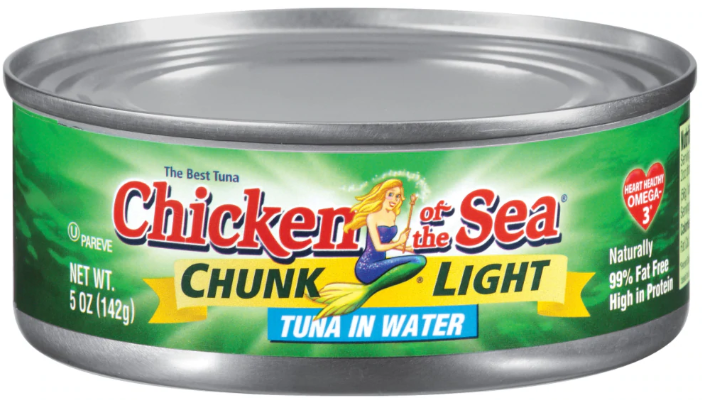
What Foods Contain Beta-Alanine?
Beta-alanine can be found in a variety of foods. Some of the richest sources include fish (yellowtail fish, haddock, rockfish, mackerel, tuna, herring, trout, and salmon), meats (chicken, turkey, beef, pork, and lamb), and soybean.
And while researchers suggest that these foods contain hefty doses of beta-alanine, there are other things worth considering.
For example, a cup of soybeans has roughly 3 grams of beta-alanine. Great, right? But a cup of soybeans is 200 grams and has 830 calories. You’d have to eat that much every day to get the minimum dose required. Not very practical, I’d say.
Poultry (for example, roasted chicken breast) has over 2 grams of beta-alanine for every cup (125 grams). But researchers suggest that consuming 200 grams (almost two cups) of chicken breast would lead to “plasma bioavailability of β-alanine equivalent to an 800 mg β-alanine supplement.”
So it appears that, even though the contents might seem significant, the absorption and availability aren’t so much. Here’s the full quote:
Ingestion of ~200 g of chicken breast meat, or 150 g of turkey breast meat, would result in an increase in the plasma bioavailability of β-alanine equivalent to an 800 mg β-alanine supplement (Harris et al. 2006). Considering that the daily dose range in supplementary β-alanine is from 1.6 to 6.4 g, this would require the consumption of between ~400 and 1600 g of chicken breast or ~300–1200 g of turkey breast per day. Thus, the direct use of β-alanine as a supplement appears, today, to be the most effective means to increase dietary intake with the objective of elevating muscle carnosine concentrations. (19)
So, yes, unless you want to consume absurd amounts of meat and soybeans every day, supplementation is the cheaper and more efficient way to go.
Beta-Alanine Side Effects – What’s With The Tingling?
Sadly, as with most products, beta-alanine also hides an unpleasant side effect you should be aware of.
If you’ve ever tried beta-alanine before (or most pre-workouts on the market), you probably felt an unpleasant sensation which is often described as ‘pins and needles’ type of itch on your skin. Some also report it as ‘mini spasms’ of the skin.
This is known as paraesthesia and is most commonly felt on the face and/or neck. Some also feel it on their hands.
Research suggests that taking over 800 mg of beta-alanine in a single dose is enough to cause this side effect (20). Also, the larger the dose, the more prominent the feeling. The good news is, this feeling tends to go away within 60-90 minutes of taking beta-alanine, and it usually becomes weaker and even non-existent as you supplement with the amino acid for longer (20).
Paraesthesia is neither harmful nor permanent and usually goes away quickly so you shouldn’t worry. One way to offset it is to take your daily beta-alanine dose in multiple, smaller doses (such as 700-800 mg in one go).
Another possible side effect of beta-alanine supplementation is the reduction in the levels of another amino acid – taurine. This is mostly because beta-alanine and taurine both use transporting proteins to enter your muscles. So when beta-alanine levels rise, they essentially take the majority of the “rides” and taurine ends up stranded.
In some animal studies, researchers have found that beta-alanine supplementation can lower taurine levels by as much as 50% (21). Still, I wouldn’t be worried too much about this because human trials have largely shown no such effects.
But, if you begin taking beta-alanine and gradually notice that your muscles tend to cramp up more, it could be due to lower levels of taurine. One option, of course, is to stop supplementing with beta-alanine in that case. Another is to add a gram of taurine to your daily stack or introduce more foods like meat, fish, and eggs to your diet.
What to Look For in a Beta-Alanine Supplement
Beta-alanine is commonly found in pre-workout supplements, but, as we discussed above, you don’t need to take it right before exercise to reap its benefits.
Still, if you want to take it as part of a pre-workout, make sure that it’s adequately dosed – at least 3 grams of beta-alanine in each serving. Too many manufacturers out there include beta-alanine, but in such small doses that you wouldn’t be able to gain much from it.
Another common issue with pre-workouts is the proprietary blend. Manufacturers are forced to list each ingredient, but they can hide the respective dosages behind the proprietary blend. In such a case, you’d be better off with another product altogether.
With that said, there are also plenty of high-quality products out there. I personally buy bulk beta-alanine from bulk supplements on amazon and use it in my DIY pre-workout. Click on this link, or the image below, if you would like to check it out.
Follow me / Pump Some Iron on Instagram for updates @pump.some.iron

